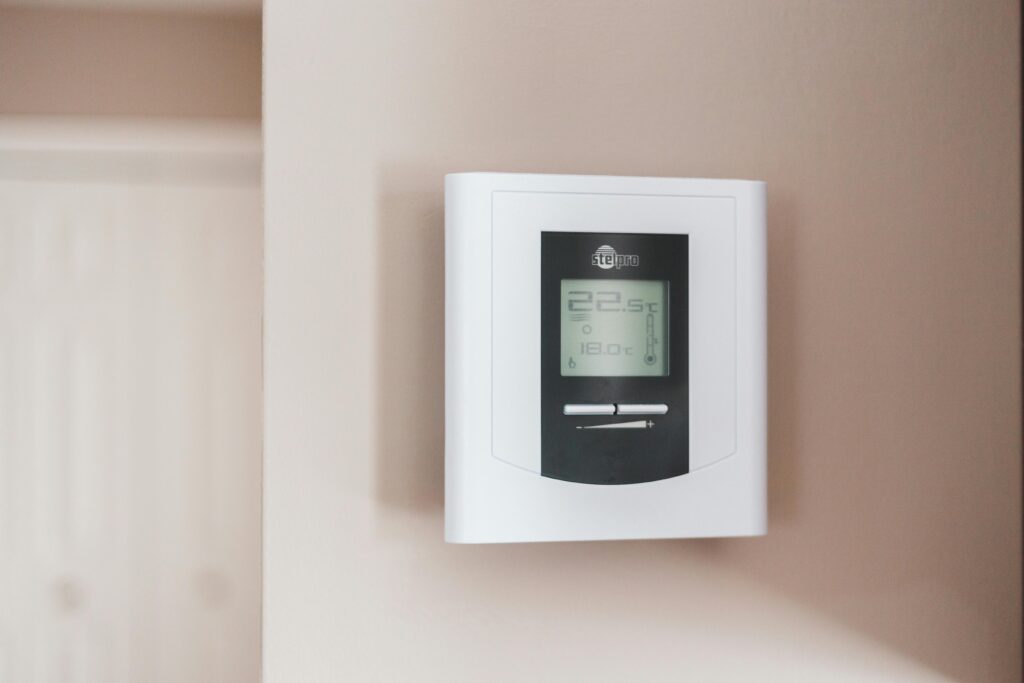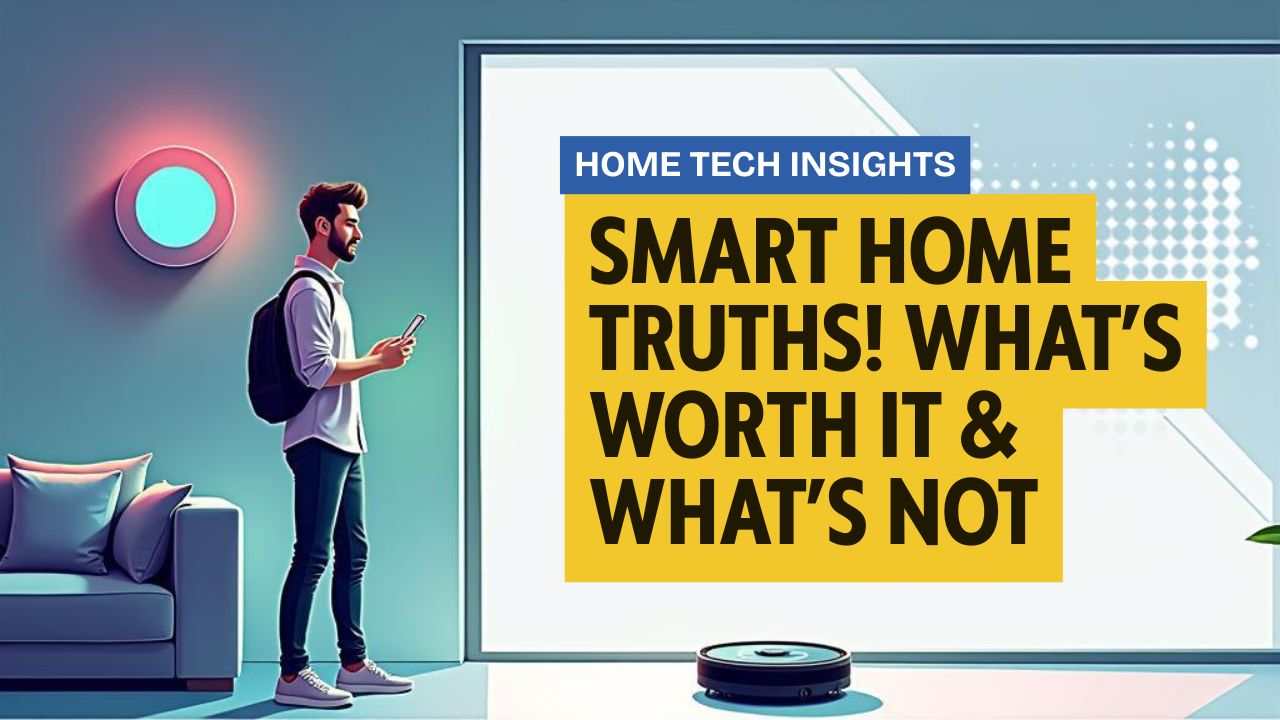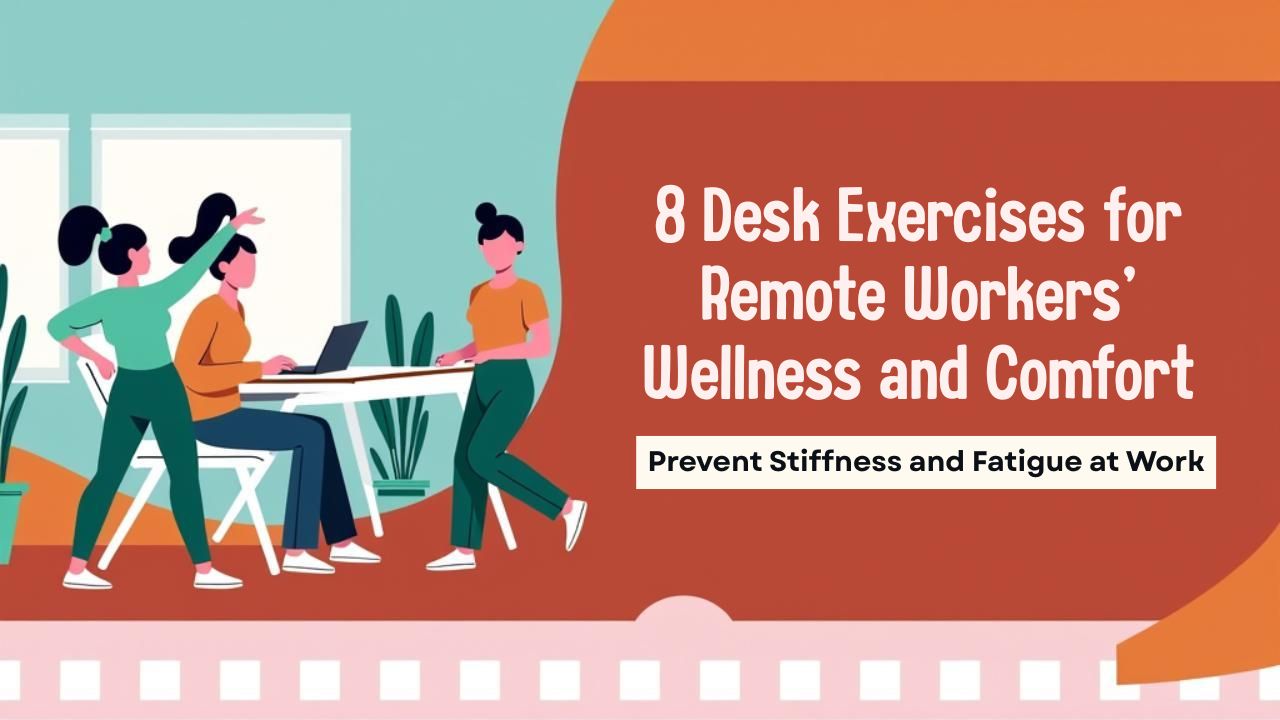A few years ago, I didn’t see the point of smart home gadgets. Lights that change color? Thermostats with apps? It all felt a bit gimmicky. But slowly one voice command here, one Wi-Fi plug there I started dipping my toes in. Now, I’ve tried everything from smart bulbs to robot vacuums, and I’ve learned what’s genuinely useful, what’s overpriced, and what ends up in a drawer collecting dust. If you’re thinking about upgrading your home with some tech, here’s a rundown of what’s worked for me (and what hasn’t).
Smart lights
I was a late convert to smart lighting. Originally launched in 2012, the Philips Hue system enabled geeks to control their lights from their smartphones, changing not only the brightness but, as the name suggested, the colour of their glow. I never saw the point – until last year, when Alexa took up residence in my home, opening up the possibility of turning lights on and off by voice control. That might not sound like fifty pounds’ worth of useful (the price of a Hue starter pack, including the wired hub and two bulbs), but it was enough to tempt me to buy in. And once you get used to voice control, the idea of having to walk over to a physical light switch feels as primitive as pushing a button on the TV to change channel. There are a few things to be aware
of, though. On a practical note, standard Hue bulbs come with screw fittings, whereas most British light sockets use a bayonet connector. You can find bayonet-equipped models, but I ended up buying a pack of cheap bayonet adapters to screw into my pendants. This does, however, mean that the bulb itself hangs lower, so it may peek slightly out of the bottom of the lampshade. Then there’s the issue of light
switches. Once you replace a regular bulb with a Hue one, your regular wall-mounted switches become somewhat useless; you need to leave them on all the time, because switching them offcuts the power to the bulb, which means you can’t turn it on again remotely. However, it’s hardly satisfactory to have to dig out your phone and start messing around with an app every time you walk into a darkened room, and shouting at Alexa isn’t ideal, either. The solution is to invest in a
dedicated Hue dimmer switch, which sticks onto the wall next to your now redundant light switch. It’s a tasteful thing, and the control unit can be detached from the wall mount, allowing you to control the lights from the sofa, or your bedside, or wherever. There’s also what’s called a “Tap” switch, with four buttons that can be assigned to four different lighting states. This doesn’t work as a remote control, but it’s self-powered so you never need to worry about batteries. Perhaps my biggest warning
about Hue is how addictive it is. Once you’ve kitted out one room with smart lighting, it immediately starts to niggle that you can’t control the rest of your home in the same way, and suddenly you’re spending hundreds of pounds on additional bulbs and switches. The secret here is that you’re not obliged to stick to Hue-branded products – your hub will work with bulbs from other manufacturers as long as they support the Zigbee Light Link standard. That means you can, for example, add cheaper Ikea Trådfri lights to your Hue setup, which could save you a decent amount of money. That’s especially true with GU10 spotlights: the Hue models cost a wallet-bashing £37, while the Ikea ones are just £12. In my case, that’s a saving of£250 across the kitchen and bathroom. Since Zigbee is a mesh network,
you can happily extend your smart lighting to the far extremities of your home, as long as there isn’t too much of a gap between bulbs. Overall, Hue is a great example of a mature, functional smart home system. My only lingering niggle is an intermittent glitch that causes Alexa to occasionally pretend not to know what I mean by “living room”, or to disingenuously declare that “a few things share that name”. But I’ll take it over the old flicky switch any day.
Smart Plugs
Having got into the swing of home automation, I fancied the idea of extending the concept to other appliances. As it happens, I recently had the chance to try out the new Amazon Smart Plug, a little mains adapter that can be turned on and off via Alexa. The technology works brilliantly, as far as it goes: you use the Alexa app to locate the socket, connect it to your 2.4GHz Wi-Fi network and give it a name (such as “bedroom fan”), and you can then turn it on or off with your voice, or via the Alexa app. The catch comes when you start
thinking about what you’re actually going to do with it. Amazon suggests lamps and fans, but as I mentioned I’m already kitted out with proper smart lights and I don’t have a fan that’s in need of voice control. Literally everything else in my home requires you to press buttons or turn knobs to activate: I don’t own a single appliance that can be satisfactorily controlled by simply cutting and reenabling the power, so the smart plug is already gathering dust. If you do have a specific use for a
smart socket then I can see the appeal, but the final problem with the official Alexa socket is that it costs a rather steep £25: Amazon’s own site has alternatives from less fashionable brands such as Meross and Teckin for half the price.
Smart Thermostat
The basic thermostat in my old home was fiddly to use, and no matter how I tweaked it, the place always seemed to end up too hot or too cold at odd times. So when my family moved into our new home in 2015, we decided to shell out £250 for a smart Nest thermostat. In retrospect, this wasn’t a great investment. Our maisonette is spread across three floors, but like a traditional thermostat, the Nest can only gauge the temperature in the main hallway.

We’ve spent a bit of time balancing the radiators, but still some rooms definitely tend to be colder than others. If I’d done more research I might have gone for a Hive system instead as it lets you install multiple thermostats and divide up your home into two or three independent heating zones. It’s a bit more expensive, though: each Hive thermostat costs £145, with the multi zone controller costing an extra £99 on top of that. You’ll also need to factor in the cost of a plumber to install it, of course. At any rate, Nest
is what we have, and it’s easy enough to control from my phone, from the web or using automation services such as IFTTT. The Nest also has a learning mode which “intelligently” turns the heating up and down as needed – but we ended up switching it off a few days after installation. That’s because it has to rely on a degree of guesswork to determine whether anybody’s home or not: it can track my smartphone location to know when I’ve left the house, but if other family members are home then the Nest won’t know about it unless they happen to walk past the thermostat’s built-in motion sensor.
Smart Radiators
In the absence of a proper multi-zone heating system, it occurred to me that a simpler solution would be to install individual smart thermostats on the upstairs radiators, to control the temperature on a room-by-room basis. Devolo sells these for £60 apiece, with the promise that you can install them yourself with no need to pay for a professional (although you also need the hub, sold separately for a steep £110). The experience started very positively: it took just a few minutes to unscrew my existing thermostatic radiator valves (TRVs) and replace them with three little smart valves, each one powered by two AA batteries. Unfortunately, with this done, I found the connection between the hub and the TRVs was very flaky: I had to go through the pairing process repeatedly to get the TRVs registered with the hub, and they kept dropping offline again. Part of the problem is that, by
default, the hub connects to your router via Ethernet. In my case that means it has to go in the living room, and obviously I can’t move the radiators, so there’s a ceiling and a wall between the hub and its nearest TRV, which is evidently more than the devices’ tiny Z-Wave radios can cope with. A sort of solution is available: the
Devolo hub supports the company’s dLAN powerline technology, so I was able to hook up a dLAN adapter to my router, plug the hub into an upstairs socket and get a much better signal. It’s even more expense though, and I found that the TRV in an adjacent room still lost its connection from time to time. I was also disappointed to discover
that the radiators don’t record what temperature they actually think it is – only changes in the target temperature are logged. If you want to see and record more detailed climate information, the standalone thermostat unit costs another £80 (see issue 291, p113 for Paul Ockenden’s in-depth guide to monitoring temperatures). And then I realised that there’s
a more fundamental problem with the whole idea. When the room is too hot, a smart TRV can detect that and shut off the radiator, but if it’s too cold that’s probably because the central heating is switched off, and an individual TRV can’t do anything about that. To get the best from a system like this you’d need to attach a smart regulator to every single radiator, and leave the boiler permanently switched on. It may well be cheaper to invest in a proper multizone central heating system, and certainly less fiddly.
Smart sensors
I also had the chance to try out a range of domestic sensors from Devolo’s Home Control range, and some of these I was rather taken with. The Home Control smart socket can be remotely switched on and off, like the Alexa plug and, at £40, it’s even more expensive – but it also logs power consumption every five minutes, so at least you have some data to show for your investment. The humidity sensor does more
than you’d expect too, recording the temperature and dew point as well as humidity. Out of the box, it’s just a reporting device, but Devolo’s Home Control software allows you to assemble IFTTT style rules, so you can have it send you an alert if the readings pass a certain threshold – or it can adjust the thermostat, turn on the smart socket or what have you. Likewise the flood sensor, which comes with a pair of wired terminals that look a bit like a European mains plug: you stick this on the floor, or dangle it somewhere suitable, and if anything (such as rising water) completes the circuit then a programmable action is automatically triggered. Perhaps my favourite sensor is the
little one that attaches to a door or window frame with simple adhesive strips and uses a magnet to register whenever the door or window is opened and closed. Unlike the radiators, this kept up a rock-solid connection to the hub – despite being located at the opposite end ofthe house – and it responded to events in just a few seconds. That means you could (for example) create a rule to automatically activate a judiciously located smart camera whenever your back door opens. There’s a motion sensor module, which works in much the same way. The only thing that lets the system
down is Devolo’s Home Control software. It’s fairly capable, but distinctly clunky, which makes the whole thing feel more like a techie toy box than a proper lifestyle system like the Hue and Nest. Still, once you’ve set up your gadgets, you won’t need to use it regularly – and the system supports Alexa and IFTTT.
Smart doorbell
One thing I don’t have is a smart doorbell. That’s partly because my current entryphone is shared with my downstairs neighbour, and she isn’t quite as enthusiastic about trying out new technology as I am. If you’re swish enough to own your
own front door, however, you might be tempted by a smart bell, such as the Ring or the Google Nest Hello. Both ofthese beam a live video feed from the doorstep to your smartphone, allowing you to see who’s calling and have a two-way conversation with them without opening the door. That might sound like technology for technology’s sake, but it means you’ll never miss a caller, even if you’re in the pet food aisle when they show up. Would-be thieves won’t know that your house is empty, and if a courier comes while you’re out and about you can actually talk to them, rather than simply coming home to discover the dreaded card on your doormat. Neither option is cheap, of course: the Ring is £179, and the Nest Hello is £229 plus, most likely, the cost of an electrician to install it, since it needs mains power. What you get, though, isn’t just a glorified Skype session – both devices can double up as 24/7 security camera. You’ll have to pay extra for video storage, with prices starting at £25 a year for the Ring, and £30 a year for the Nest, but the Nest also learns to recognize familiar faces, so you can track the comings and goings of specific individuals. It’s clever and in a decade or two
we’ll probably be taking this sort of technology for granted. For now, when you think about the upfront cost, the ongoing subscription fee and the inconvenience of installing it, you may be tempted to stick with the old-fashioned ringer.
Smart Cleaning
Occasionally, as a technology reviewer, you come across a product that’s such an obvious hit that you immediately have to go out and buy one for yourself. That was me, more than a decade ago, with the Roomba robot vacuum cleaner. Apart from the dishwasher I’d have to say that few appliances have done more for domestic harmony. Today’s Roomba devices are even
more impressive. Back then, you had to press a physical button on top ofthe unit to initiate a vacuuming session. Current models connect to your Wi-Fi network, and you can kick offa clean from anywhere in the world using the iRobot smartphone app, or Alexa. You can also set up a regular cleaning schedule, and when the job’s done the Roomba automatically returns to a charging dock, so you don’t even need to remember to plug it into the mains. I’ll always have a great fondness
for the first true household robot, but I don’t use the Roomba anymore. The reasons are boringly practical: since my house has several staircases, the Roomba can only ever vacuum a fraction of its surfaces without being physically picked up and carted from floor to floor. More to the point, I now live with a lively three-year-old, and the Roomba can’t clean a carpet if it’s covered in toys, discarded clothes and molten lollies. If your kids have flown the
nest, however, and you live in an apartment or bungalow, I still can’t recommend the Roomba highly enough. Prices start at £250 for the Roomba 606, though the cheapest version with Wi-Fi is the £380 Roomba 676. If money’s no object you can pay as much as £900 for the top-of-the-line Roomba 980, though I doubt it will make your carpets three times as clean.
Smart Scales
Since I’m no longer 18, I probably ought to eat something other than pizza from time to time. I’ve found the best way to remind myself of that sad fact is to keep a log of my weight, so I can see how it’s trending. In the olden days I used to do
this with graph paper and a pencil, but then I discovered the Fitbit Aria bathroom scales. These cost me a rather shocking £90 – and they’ve since been replaced by the Aria 2, which costs £20 more – but they have a definite geek appeal. Every time you step on them, your weight is automatically logged in your Fitbit account, so you can review it on your phone or web browser. Your body fat percentage and BMI are calculated too. And, cleverly, the scales can recognize multiple family members’ physical profiles, so when my wife steps on, the stats are automatically logged against her Fitbit profile, and not mine. The downside is that logging
weight is only a small part of Fitbit’s business, and it shows. Drop by the website and your weight is just one small, square tile, surrounded by stats about your exercise, nutrition and friends – all of which, for me, are empty. If you’ve bought into the Fitbit lifestyle then the Aria is a fantastic addition. If not, the paraphernalia are a distraction. When the time comes to replace the Aria, I’ll give the Withings Body scales a try, as it promises most of the same features for an easier-toswallow £50. Of course, you can buy a functional bathroom scale for £7, so that smart home premium is very much in effect. But there’s something delightful about stepping off the bathroom tiles and knowing that your bodily statistics have been logged and analyzed. The intelligent scale may be a simple, modest product, but it’s one that really delivers on the promise of the smart home.




